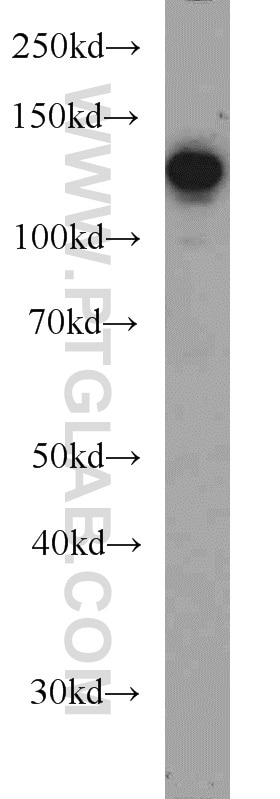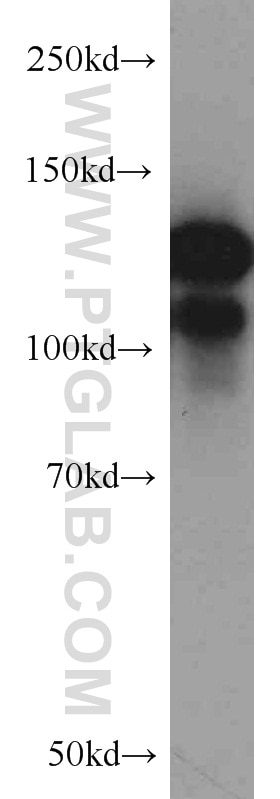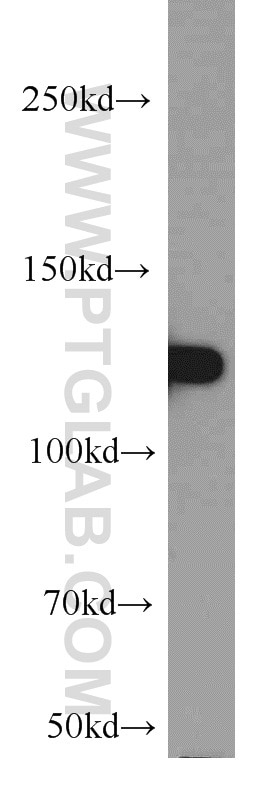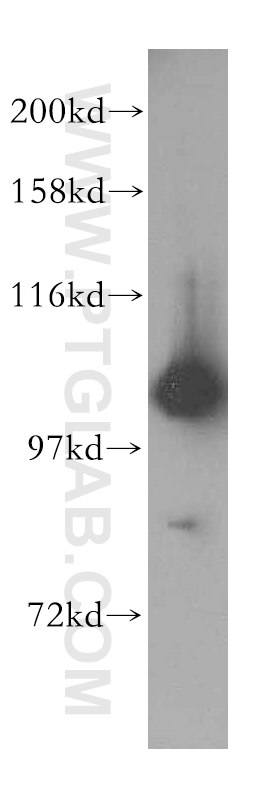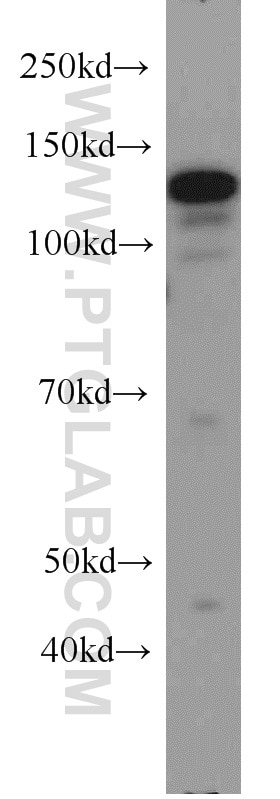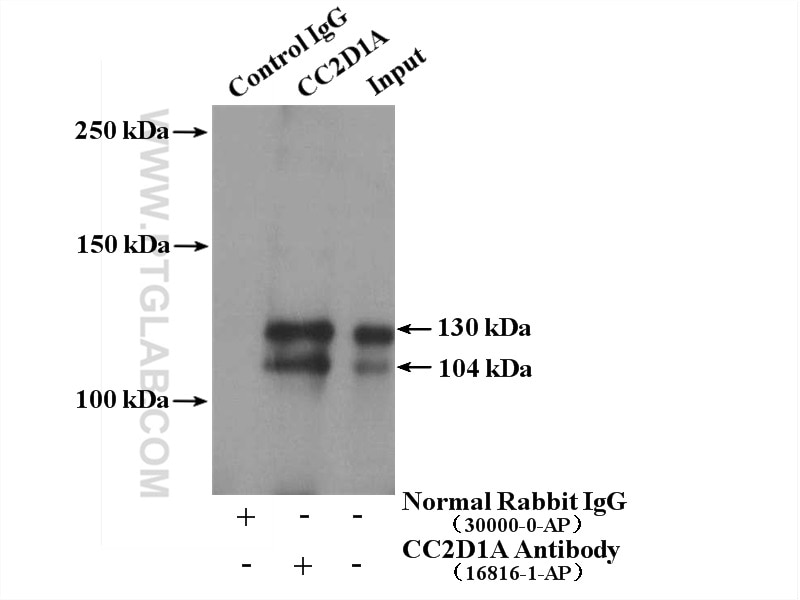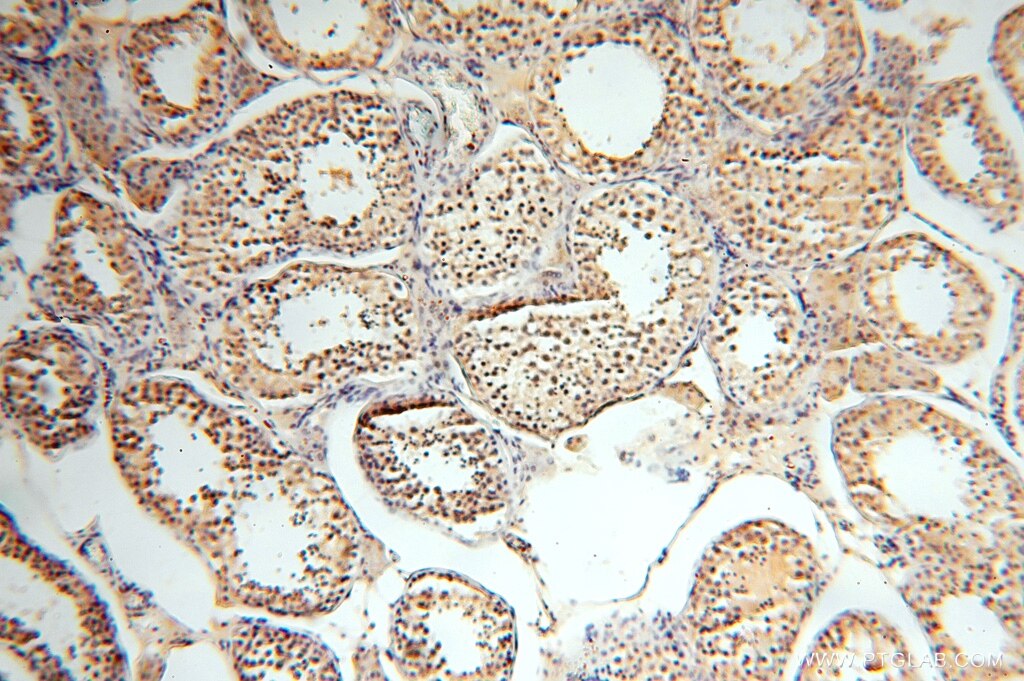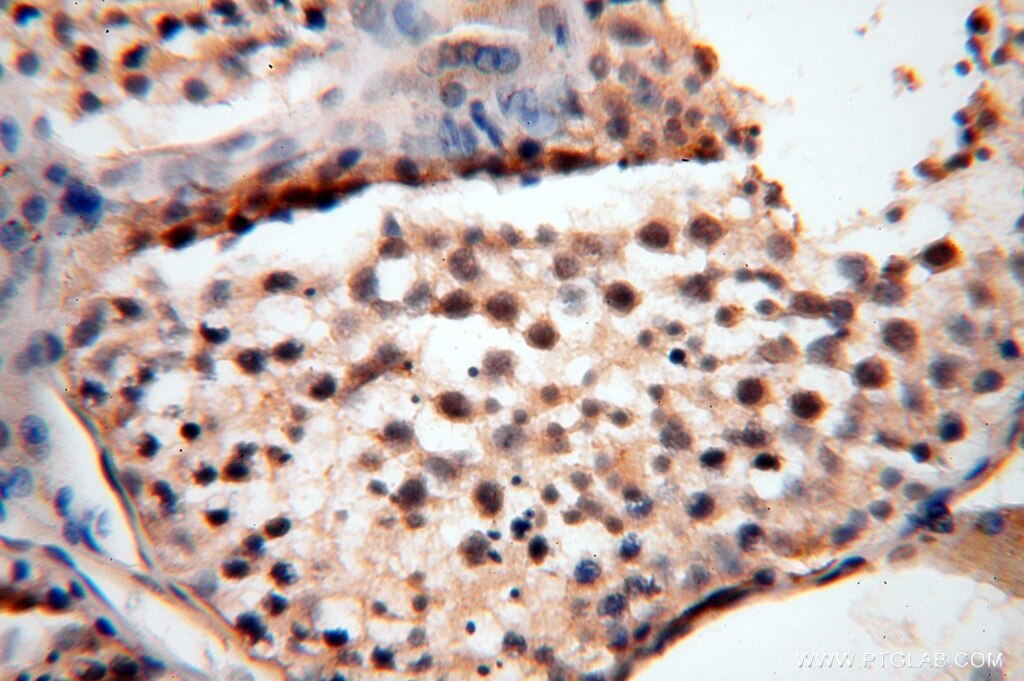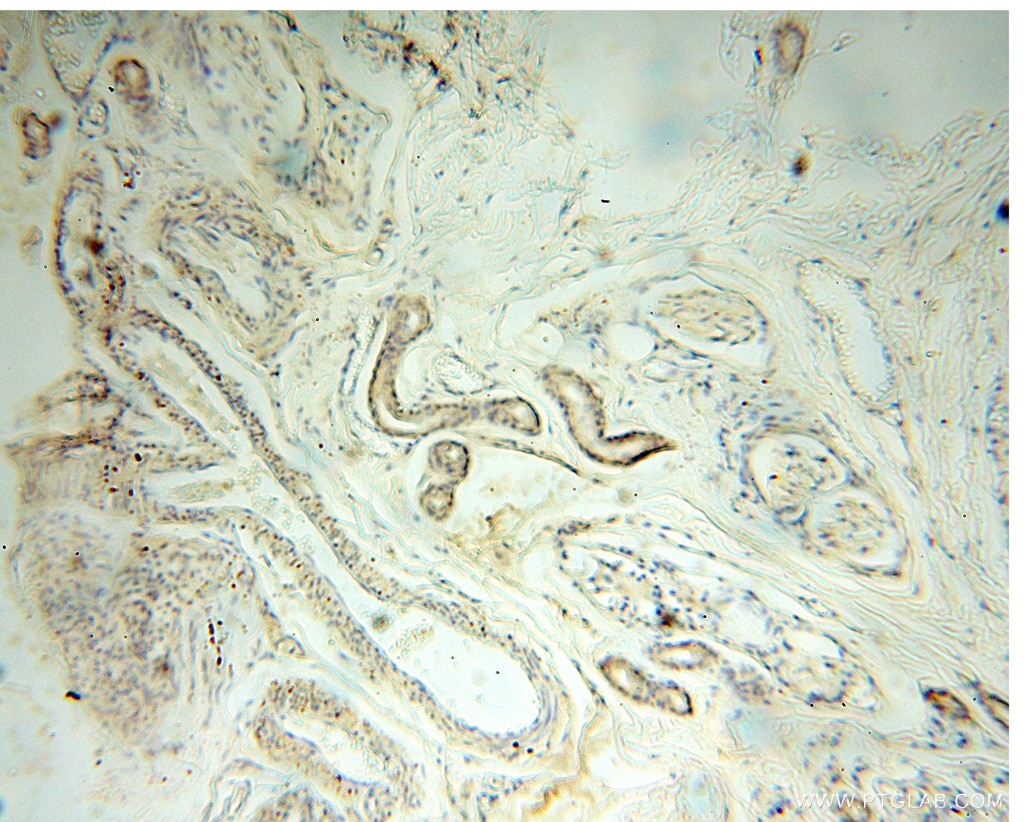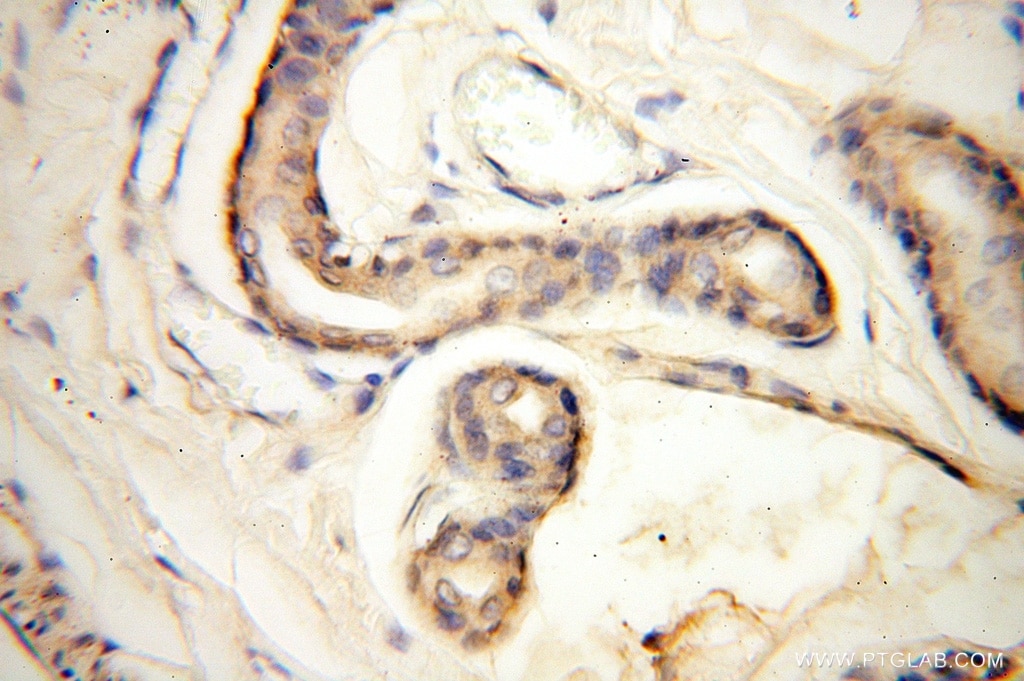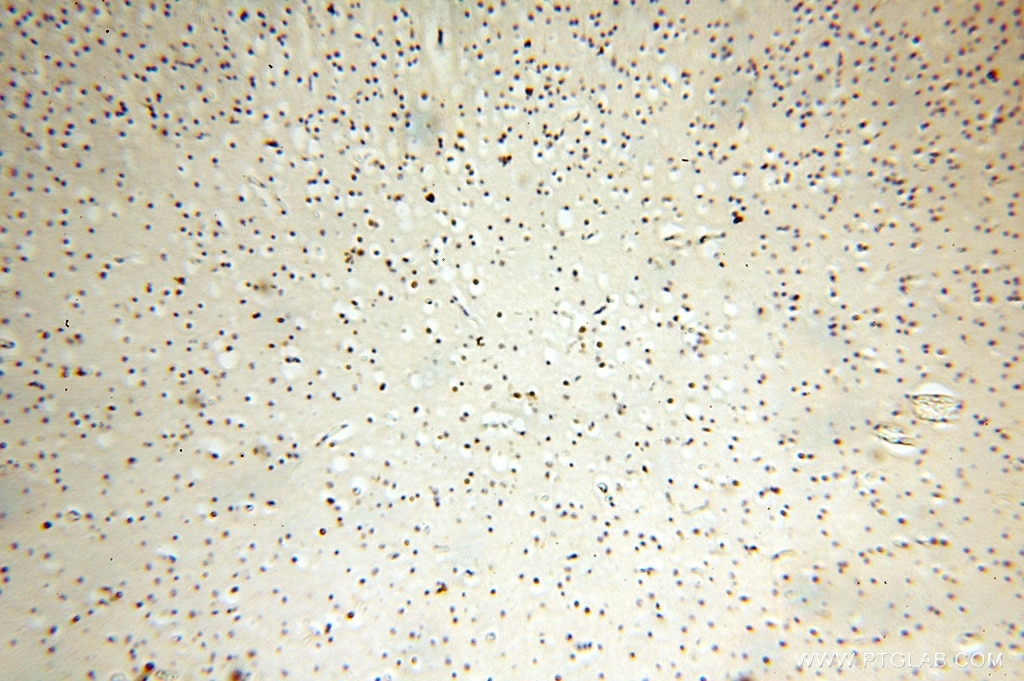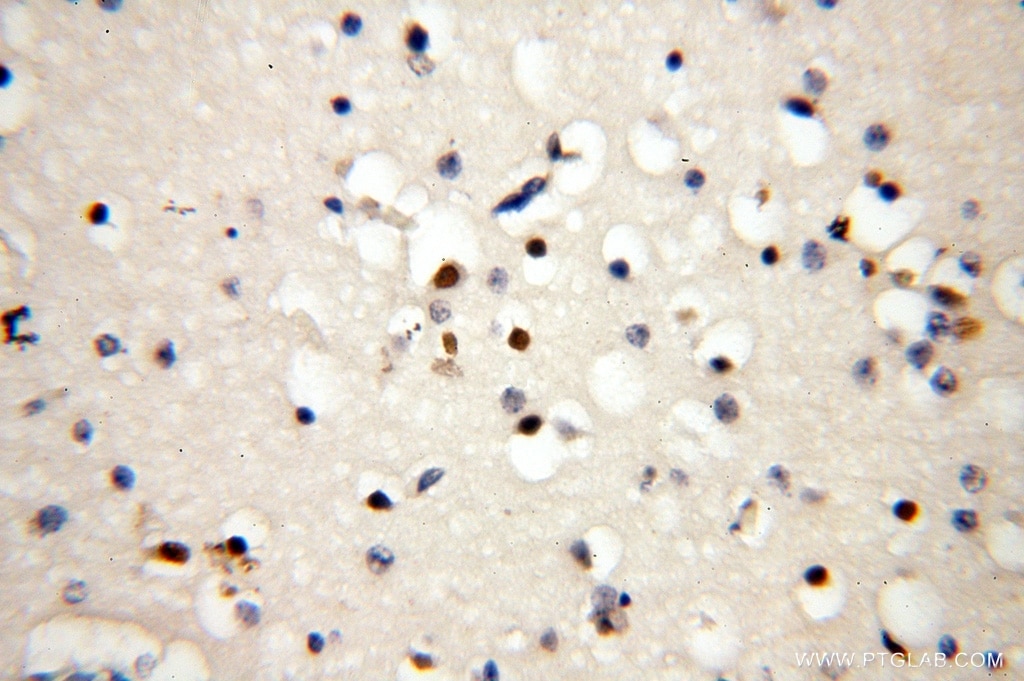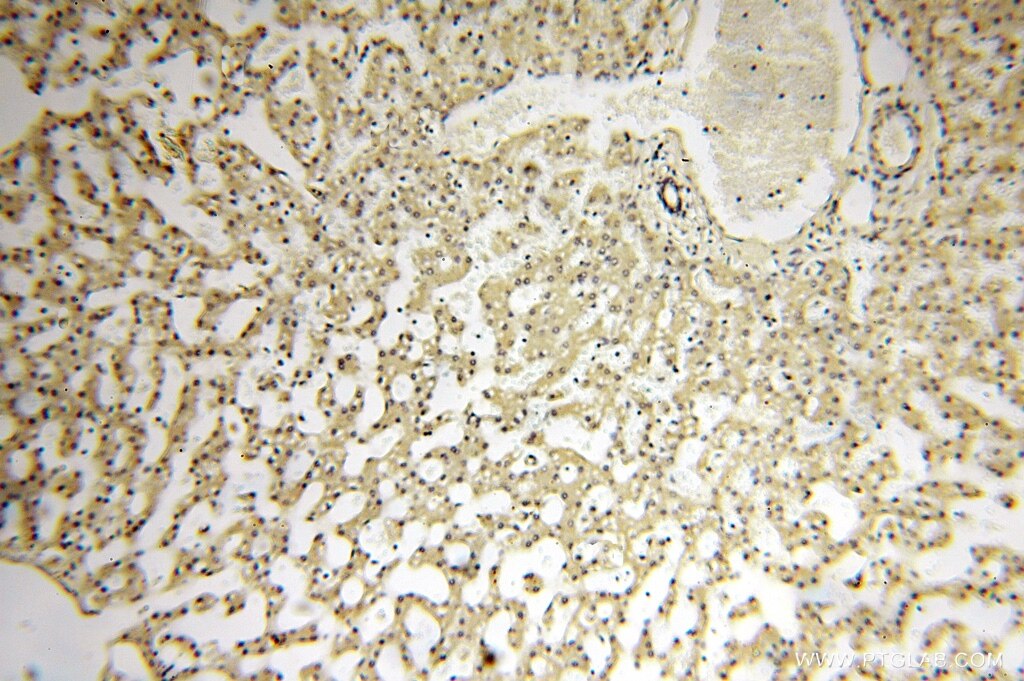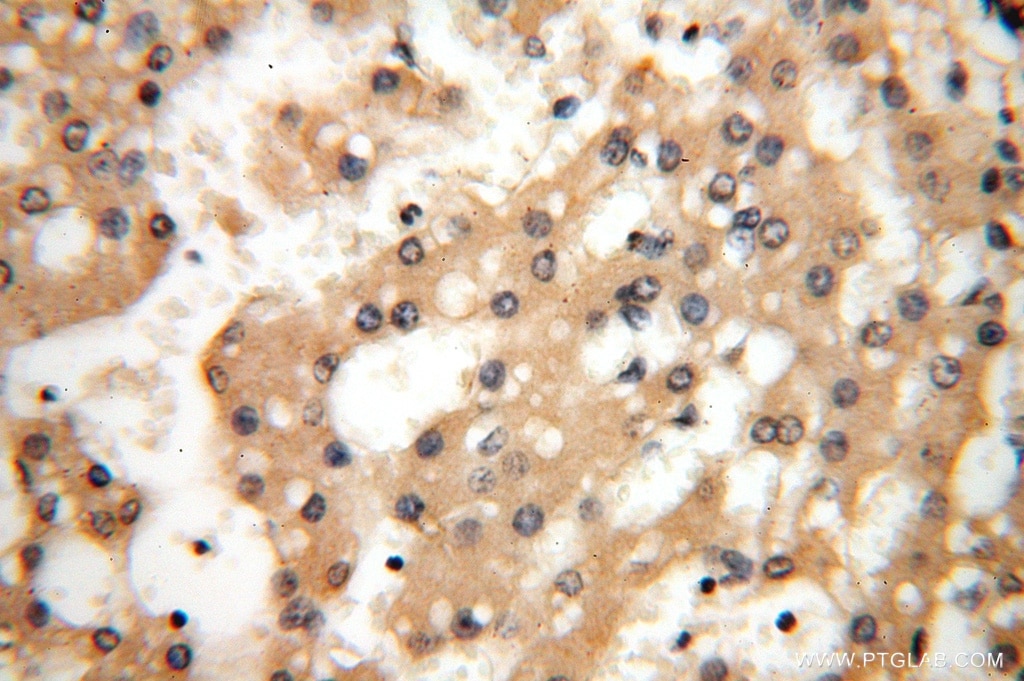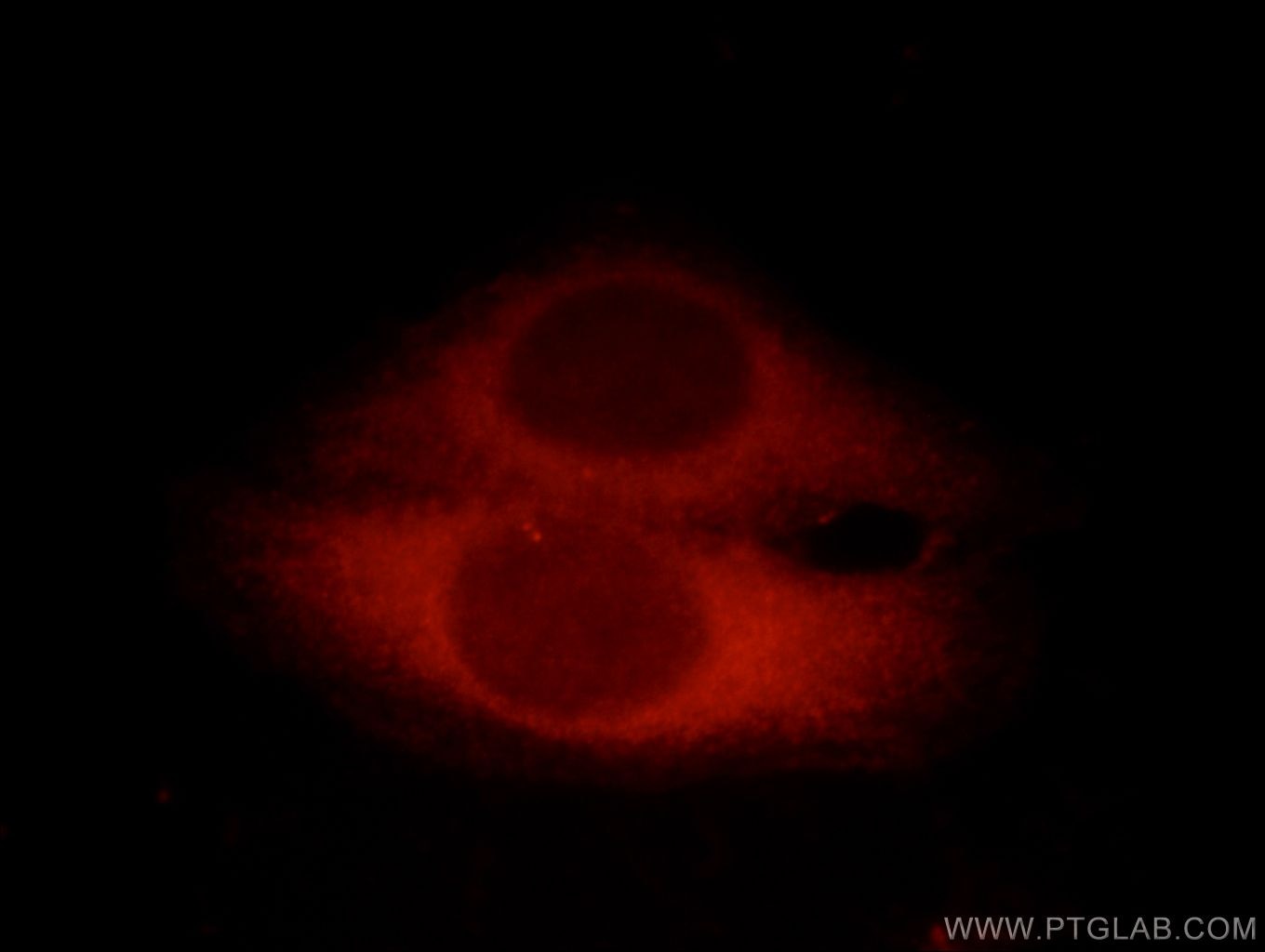- Featured Product
- KD/KO Validated
CC2D1A Polyklonaler Antikörper
CC2D1A Polyklonal Antikörper für WB, IHC, IF/ICC, IP, ELISA
Wirt / Isotyp
Kaninchen / IgG
Getestete Reaktivität
human, Maus, Ratte
Anwendung
WB, IHC, IF/ICC, IP, ELISA
Konjugation
Unkonjugiert
Kat-Nr. : 16816-1-AP
Synonyme
Geprüfte Anwendungen
| Erfolgreiche Detektion in WB | HEK-293-Zellen, HeLa-Zellen, Jurkat-Zellen, Mauslebergewebe |
| Erfolgreiche IP | Mauslebergewebe |
| Erfolgreiche Detektion in IHC | humanes Hodengewebe, humanes Hirngewebe, humanes Lebergewebe, humanes Hautgewebe Hinweis: Antigendemaskierung mit TE-Puffer pH 9,0 empfohlen. (*) Wahlweise kann die Antigendemaskierung auch mit Citratpuffer pH 6,0 erfolgen. |
| Erfolgreiche Detektion in IF/ICC | HepG2-Zellen |
Empfohlene Verdünnung
| Anwendung | Verdünnung |
|---|---|
| Western Blot (WB) | WB : 1:500-1:2000 |
| Immunpräzipitation (IP) | IP : 0.5-4.0 ug for 1.0-3.0 mg of total protein lysate |
| Immunhistochemie (IHC) | IHC : 1:20-1:200 |
| Immunfluoreszenz (IF)/ICC | IF/ICC : 1:20-1:200 |
| It is recommended that this reagent should be titrated in each testing system to obtain optimal results. | |
| Sample-dependent, check data in validation data gallery | |
Veröffentlichte Anwendungen
| KD/KO | See 1 publications below |
| WB | See 5 publications below |
Produktinformation
16816-1-AP bindet in WB, IHC, IF/ICC, IP, ELISA CC2D1A und zeigt Reaktivität mit human, Maus, Ratten
| Getestete Reaktivität | human, Maus, Ratte |
| In Publikationen genannte Reaktivität | Maus, Ratte |
| Wirt / Isotyp | Kaninchen / IgG |
| Klonalität | Polyklonal |
| Typ | Antikörper |
| Immunogen | CC2D1A fusion protein Ag10355 |
| Vollständiger Name | coiled-coil and C2 domain containing 1A |
| Berechnetes Molekulargewicht | 951 aa, 104 kDa |
| Beobachtetes Molekulargewicht | 130 kDa, 104 kDa |
| GenBank-Zugangsnummer | BC064981 |
| Gene symbol | CC2D1A |
| Gene ID (NCBI) | 54862 |
| Konjugation | Unkonjugiert |
| Form | Liquid |
| Reinigungsmethode | Antigen-Affinitätsreinigung |
| Lagerungspuffer | PBS with 0.02% sodium azide and 50% glycerol |
| Lagerungsbedingungen | Bei -20°C lagern. Nach dem Versand ein Jahr lang stabil Aliquotieren ist bei -20oC Lagerung nicht notwendig. 20ul Größen enthalten 0,1% BSA. |
Hintergrundinformationen
CC2D1A (coiled-coil and C2 domain-containing 1A), also known as Freud-1, Aki1 or TAPE (TBK1-associated protein in endolysosomes), is a evolutionary conserved protein located in different subcellular compartments, including the nucleus, centrosome, and endolysosomes. It acts as a scaffold protein that interacts with various proteins and plays diverse biological roles. Mutations in CC2D1A have been linked to nonsyndromic mental retardation (NMSR) and generate a truncated 85-kDa product. Several isoforms of CC2D1A proteins have also been described: 120 /130-kDa doublet of long isoform and 67 kDa short isoform. The short isoform of CC2D1A has been identified as the predominant isoform in rodent cells, while the long isoform is more abundant in human cells. Recently it has been reported that CC2D1A/TAPE is the first innate immune regulator implicated in both TLR and RLR signaling at a very early step.
Protokolle
| PRODUKTSPEZIFISCHE PROTOKOLLE | |
|---|---|
| WB protocol for CC2D1A antibody 16816-1-AP | Protokoll herunterladen |
| IHC protocol for CC2D1A antibody 16816-1-AP | Protokoll herunterladenl |
| IF protocol for CC2D1A antibody 16816-1-AP | Protokoll herunterladen |
| IP protocol for CC2D1A antibody 16816-1-AP | Protokoll herunterladen |
| STANDARD-PROTOKOLLE | |
|---|---|
| Klicken Sie hier, um unsere Standardprotokolle anzuzeigen |
Publikationen
| Species | Application | Title |
|---|---|---|
Anesthesiology Astroglial MicroRNA-219-5p in the Ventral Tegmental Area Regulates Nociception in Rats. | ||
J Biol Chem TBK1-associated protein in endolysosomes (TAPE)/CC2D1A is a key regulator linking RIG-I-like receptors to antiviral immunity.
| ||
Neurotherapeutics Loss of CC2D1A in Glutamatergic Neurons Results in Autistic-Like Features in Mice. | ||
J Neurosci Conditional Deletion of CC2D1A Reduces Hippocampal Synaptic Plasticity and Impairs Cognitive Function through Rac1 Hyperactivation. |
